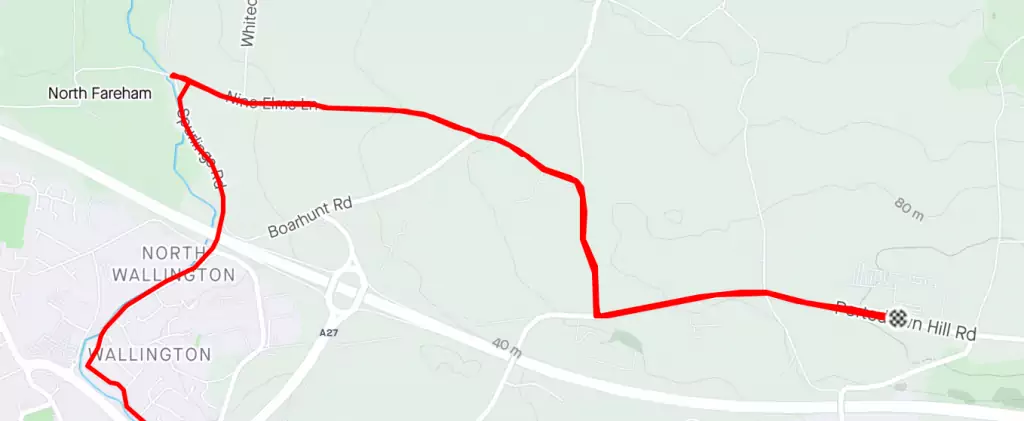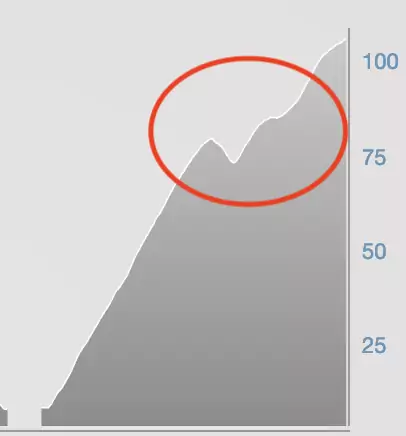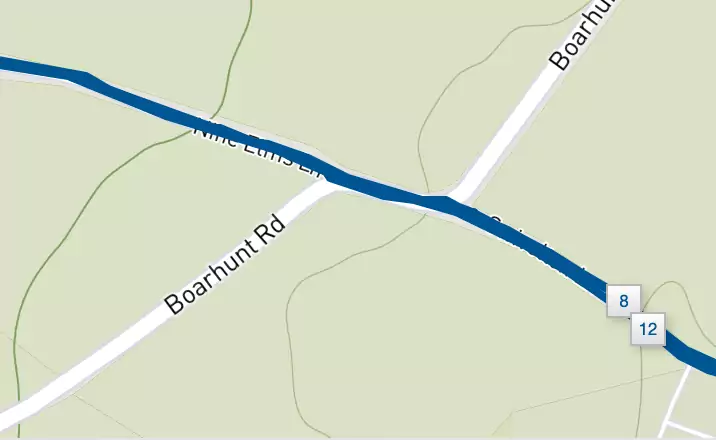Yesterday, I did an FTP test -functional threshold power test – on my bike. This is a test to find out how hard you can cycle for one hour. I failed a test back in May and I’ve been nervous about it all week.
The test went pretty well and I’ve managed to up my FTP from 266w to 275w, which I am pretty happy with. But, if I’ve learnt anything whilst working in an agile software engineering world it’s that a good retrospective can’t go amiss. So here’s a brief look at what went down.
An FTP test could be done two ways, an all out 20 minute effort or with two all out 8-minute efforts up a climb. I did the latter at a climb on Portsdown Hill just North of Fareham. I would be covering ~3.6km and climbing ~100m in that time.

I thought I’d done a good job with planning, but I didn’t and I’ll explain why now.
My first mistake was choosing a climb with a descent and a flat piece of road mixed it. Yes, it makes you faster, but it makes producing high power a lot harder and inconsistent compared to the rest of the climb. The relief of a descent also isn’t helpful. During a 100% effort climb, it is cruel to your mind and legs.

I also didn’t pay close attention to the roads I would be using. Below you can see I go onto a main road and leave it all in the space of 30 seconds, crossing oncoming traffic.

Also, making a left turn onto a busy and fast main road:

Two reasons why those route choices are a bad idea. First, and always first, is safety. Whether flying up a climb or descending onto a main road, it really isn’t smart to risk. Myself or a driver might not be paying full attention! I was fortunate it was a quiet day and I was able to keep an eye on any traffic that may have been passing and take the roads sensibly.
Another reason is keeping safe or stopping (which you should be doing) has an impact on your 8-minute effort. Take a look at these two graphs showing a dip in power output on the two efforts.
That is roughly 20 seconds where I’m not applying power, freewheeling or braking whilst I turn onto a main road. In a test of my ability to put power down consistently over a time period it really isn’t helpful. My consistent-ish power before this is ruined and then a power spike as I felt I need to catch up with lost power.
All of this slowing down and letting your power drop down into the 100 watts makes returning to putting out 300 watts absolutely horrible, not that it was nice before, but you really don’t want to give your mind or body a taste of relaxation during an effort like that.
Even though I made my evening slightly dangerous and hard I managed to score myself a watts per kg (W/KG) that rates me as good/very good at pushing the pedals on my bike.

That value impacts my training and how hard I’ll be cycling over the next few months. A better route could have added another 5 watts to my FTP, meaning my training over the next few months could have been harder than it will be now, which could mean I would improve faster! That’s all pretty important as I’m trying to get better at triathlon and crack an age group top-25 of an Ironman event next year.
Not that my result is bad, but this shows that some not so smart route planning during an FTP test can have an impact further down the line!

